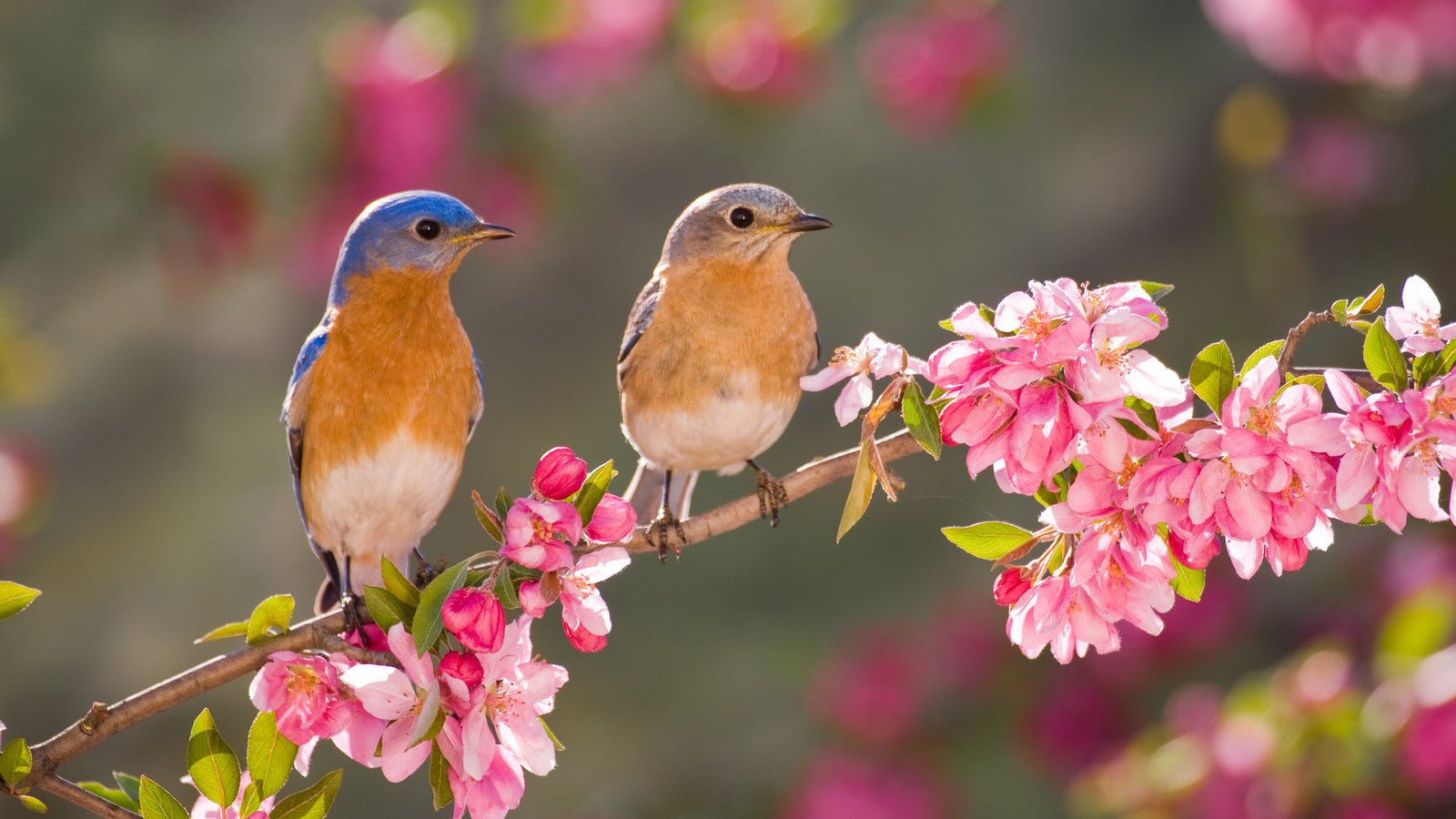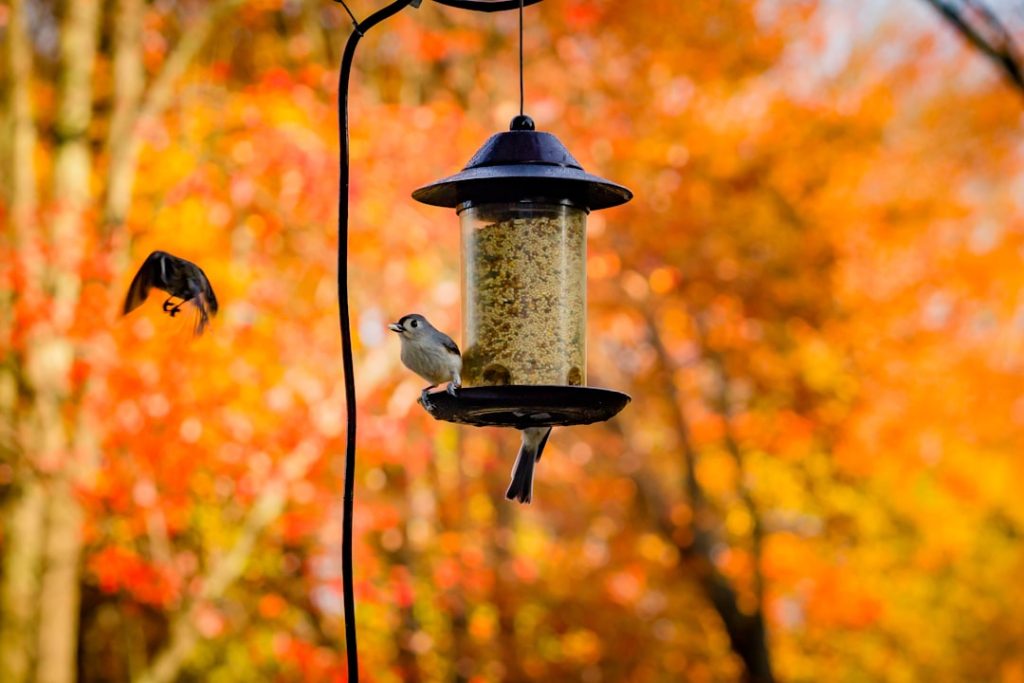As the leaves turn golden and the air grows crisp, your backyard can become a vibrant haven for birds this fall. Imagine waking up to the cheerful songs of colorful visitors right outside your window.
You might wonder how to make your outdoor space so inviting that birds choose to stay and visit often. You’ll discover simple, effective ways to attract birds during the fall season. Whether you’re a seasoned bird lover or just starting out, these tips will help you create a welcoming environment that brings nature’s beauty closer to you.
Keep reading to transform your yard into a bird magnet this autumn!
Choosing Fall-friendly Plants
Fall is a great time to attract birds to your yard. Picking the right plants helps feed and shelter them.
Choose plants that produce seeds and berries in fall. Native plants work best for local birds.
Native Trees And Shrubs
Native trees and shrubs provide natural food and shelter. Birds know these plants well.
Look for trees and shrubs that drop seeds or nuts in fall. These foods keep birds strong for winter.
- Oak trees drop acorns that many birds eat.
- Maple trees produce winged seeds called samaras.
- Serviceberry shrubs offer berries in late fall.
- Hazelnut bushes provide nuts for birds.
Seed-producing Flowers
Flowers that make seeds in fall attract many seed-eating birds. They also add color to your garden.
Choose flowers with large seed heads that birds can easily feed on. Leave some flowers to go to seed.
- Sunflowers produce large seeds loved by finches.
- Coneflowers have seed heads that attract goldfinches.
- Black-eyed Susans offer seeds birds enjoy.
- Joe-Pye weed seeds feed small songbirds.
Berry-bearing Bushes
Berries are a tasty and important food source for birds in fall. Many birds rely on them before winter.
Pick bushes that keep their berries late into the season. This helps birds when other food is scarce.
- Holly bushes have bright red berries that last long.
- Winterberry shrubs hold berries well into cold months.
- Beautyberry bushes produce purple berries in fall.
- Dogwood shrubs offer red berries birds enjoy.

Credit: lakesidegardengallery.com
Providing Food Sources
Feeding birds in fall helps them get ready for colder months. Birds need energy from food to survive.
You can attract many bird species by offering the right foods. Different foods suit different birds.
Natural Seeds And Nuts
Natural seeds and nuts are excellent food sources for birds in fall. They give birds protein and fat.
Examples include sunflower seeds, safflower seeds, and peanuts. These foods attract finches, chickadees, and nuthatches.
- Black oil sunflower seeds are popular with many birds.
- Peanuts provide fat and energy.
- Safflower seeds attract cardinals and doves.
Supplemental Bird Feeders
Use bird feeders to offer extra food. Place feeders where birds feel safe.
Hang feeders near trees or bushes for cover. Clean feeders often to keep birds healthy.
- Tube feeders work well for small seeds.
- Platform feeders allow many birds to feed at once.
- Suet feeders provide energy-rich food for cold days.
Seasonal Fruit Offerings
Many birds enjoy fresh fruits in fall. Fruits give vitamins and water to birds.
Offer fruits like apples, berries, and grapes. Cut fruits into small pieces for easy eating.
- Apples can be sliced and placed on feeders.
- Ripe berries attract thrushes and robins.
- Grapes are good for small songbirds.
Creating Shelter And Nesting Spots
Birds need safe places to rest and build nests in the fall. Creating shelter helps them survive colder weather. It also provides spots for birds to hide from predators.
You can make your yard bird-friendly by adding natural and man-made shelters. This guide shows easy ways to create good nesting spots for birds this fall.
Dense Foliage And Brush Piles
Thick bushes and shrubs give birds cover from wind and enemies. Birds like to hide and sleep in dense leaves. Brush piles also offer good places for nesting.
Leave some fallen branches and leaves in a quiet corner of your yard. This creates a natural shelter that birds can use during cold days.
- Plant native shrubs with thick leaves
- Keep branches and leaves in a small pile
- Place brush piles near bird feeders or water
Birdhouses And Nesting Boxes
Birdhouses give birds a safe home when natural spots are hard to find. Use wooden boxes with small entry holes to keep bigger animals out. Clean boxes yearly to keep birds healthy.
Put birdhouses in quiet, sheltered places. Avoid direct sunlight and strong wind. Different birds prefer different house sizes and hole shapes.
- Choose birdhouses with proper hole sizes for local birds
- Mount boxes 5 to 10 feet above the ground
- Face the entrance away from prevailing winds
- Check and clean houses before fall starts
Protecting Existing Habitats
Keep natural bird habitats safe by avoiding cutting down trees or removing shrubs in fall. Birds use these areas to hide and find food. Disturbing habitats can make birds leave.
Try to limit yard work near nesting spots during bird season. Use organic gardening methods to keep the environment safe for birds and insects.
- Do not trim bushes or trees in fall
- Use fewer chemicals in your garden
- Protect wet or wooded areas on your property
- Leave dead trees standing if safe

Credit: www.newsobserver.com
Water Features For Fall Birds
Birds need water to drink and bathe, especially in fall. Providing water helps birds stay healthy and active.
Water features attract many types of birds. They offer a place to drink and clean their feathers.
Birdbaths And Moving Water
Birdbaths are simple and popular water sources. Birds like shallow water where they can splash and drink safely.
Moving water draws birds quickly. Sounds from fountains or drippers catch their attention and invite them in.
- Use shallow birdbaths with gentle slopes
- Add a small fountain or dripper to keep water moving
- Keep water clean to avoid disease
Preventing Freezing Water
In fall, temperatures can drop and freeze water. Frozen water stops birds from drinking and bathing.
Use heaters or place water features in sunny spots. This helps keep water from freezing too soon.
- Use birdbath heaters designed to keep water liquid
- Change water regularly to prevent ice build-up
- Place water features where sun hits during the day
Placement And Maintenance Tips
Place water features near bushes or trees. Birds feel safe with cover nearby and can watch for predators.
Clean water features often. Dirty water can spread germs and keep birds away.
- Keep birdbaths 5 to 6 feet away from dense shrubs
- Clean birdbaths every few days with mild soap and water
- Refill with fresh water daily, especially in dry weather
Timing And Observation
Attracting birds in fall takes careful timing and watching. Birds follow specific patterns during this season.
Knowing when and how to observe helps you enjoy their visits and support them well.
Peak Migration Periods
Many birds migrate south in fall. Peak times vary by species and location. Watching during these times increases chances to see more birds.
- Early September to mid-October: Warblers and thrushes move through.
- Mid-October to early November: Larger birds like ducks and hawks travel.
- Late November: Some sparrows and finches start their trip.
Daily Feeding Routines
Birds eat at certain times during the day. Watching these routines helps attract them to your feeders.
| Time of Day | Bird Activity |
| Early Morning | Birds search for food after resting. |
| Midday | Less active; often rest or preen. |
| Late Afternoon | Feed again before nightfall. |
Recording Bird Visits
Keeping notes on bird visits helps track patterns. It shows which birds come and when.
Try these simple ways to record your observations:
- Write down the date and time of each visit.
- Note the bird species and number of birds.
- Record weather conditions and changes.
- Use a bird guide or app to help identify species.
Avoiding Common Pitfalls
Attracting birds in fall can be rewarding. Yet, some mistakes can scare them away or cause harm.
Learn how to avoid common problems to keep birds safe and happy in your yard this season.
Deterring Predators
Predators like cats and hawks can scare birds from your feeders. Keep these animals away to protect visiting birds.
- Place feeders in open areas for better bird visibility.
- Use baffles on feeder poles to block climbing predators.
- Keep cats indoors or supervise them outside.
- Trim trees and bushes near feeders to reduce hiding spots.
Preventing Window Collisions
Birds often fly into windows because they see reflections or think they can pass through.
| Method | Description |
| Window decals | Place stickers spaced no more than 4 inches apart. |
| External screens | Install mesh to soften reflections and cushion impacts. |
| Close curtains | Reduce reflections by closing blinds or curtains. |
| Move feeders | Place feeders either very close (under 3 feet) or far (over 30 feet) from windows. |
Minimizing Pesticide Use
Pesticides harm birds by poisoning their food and water. Avoid using chemicals in your garden.
Try these natural alternatives:
- Hand-pick pests from plants.
- Use insecticidal soaps safe for birds.
- Encourage beneficial insects like ladybugs.
- Plant pest-resistant flowers and shrubs.

Credit: www.gardencentreoxford.com
Frequently Asked Questions
What Are The Best Plants To Attract Birds In Fall?
Plant native trees and shrubs with berries, like dogwood and serviceberry. These provide food and shelter during fall migration. Brightly colored plants also catch birds’ attention and help them find food easily.
How Can I Create A Bird-friendly Habitat In Fall?
Offer fresh water, native plants, and safe shelter. Avoid pesticides and provide bird feeders with seasonal seeds. Clean feeders regularly to keep birds healthy and encourage repeat visits.
Which Bird Feeders Work Best In Autumn?
Use feeders filled with sunflower seeds, safflower, and suet. These foods offer high energy for migrating birds. Platform feeders and tube feeders attract diverse species in the fall months.
When Is The Best Time To Attract Birds In Fall?
Early fall is ideal as many birds migrate and seek food. Provide resources from late August to November to support their journey and increase your chances of sightings.
Conclusion
Attracting birds in fall adds joy to your garden. Use bird feeders filled with seeds. Provide fresh water sources. Plant native shrubs for shelter. Hang birdhouses for nesting. Keep your garden clean and inviting. Watch for migrating species. Enjoy their songs and colors.
Engaging with nature brings peace. It’s simple and rewarding. Anyone can do it. Share your experiences with friends. Inspire others to join the fun. Birdwatching connects us to the seasons. Embrace the beauty of fall. Your efforts create a haven for birds.
A delightful experience for everyone.

